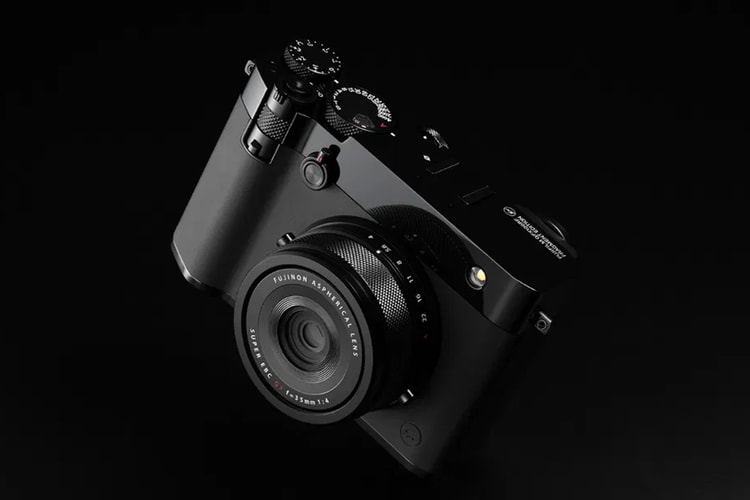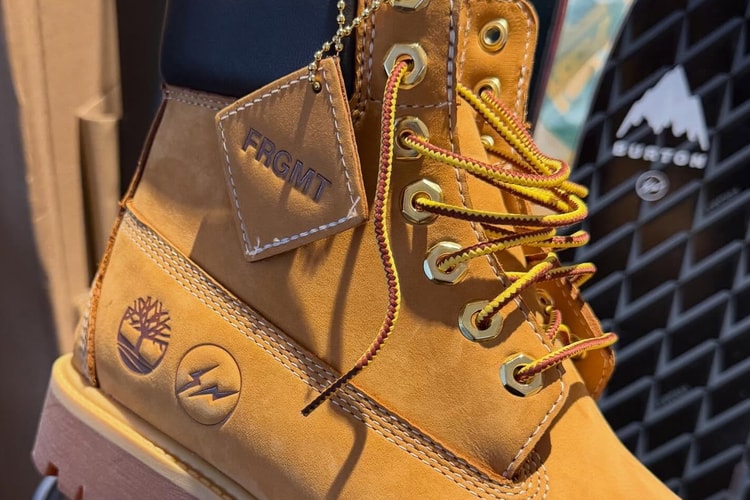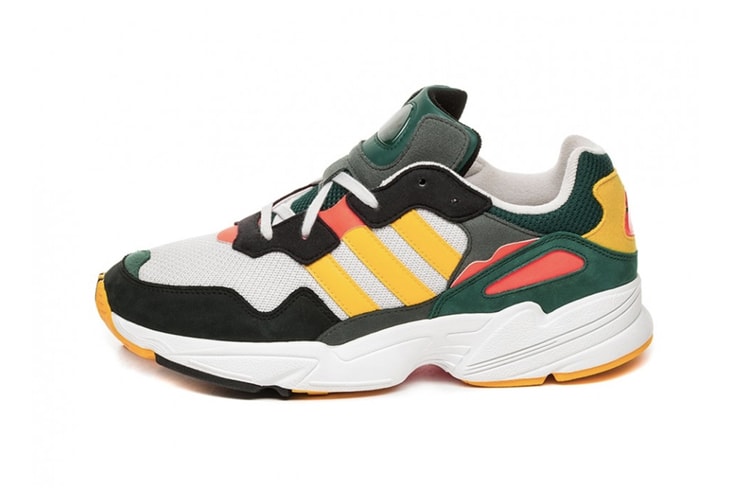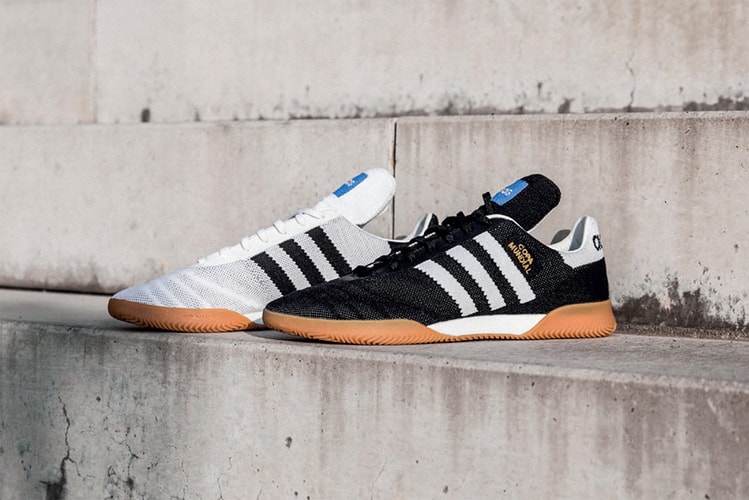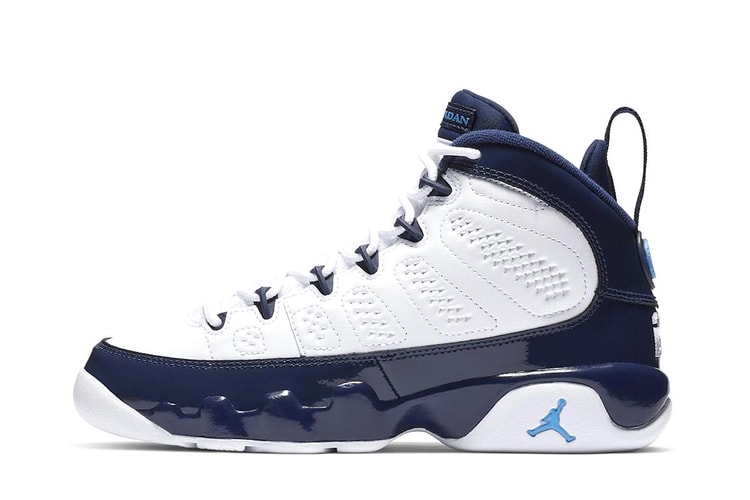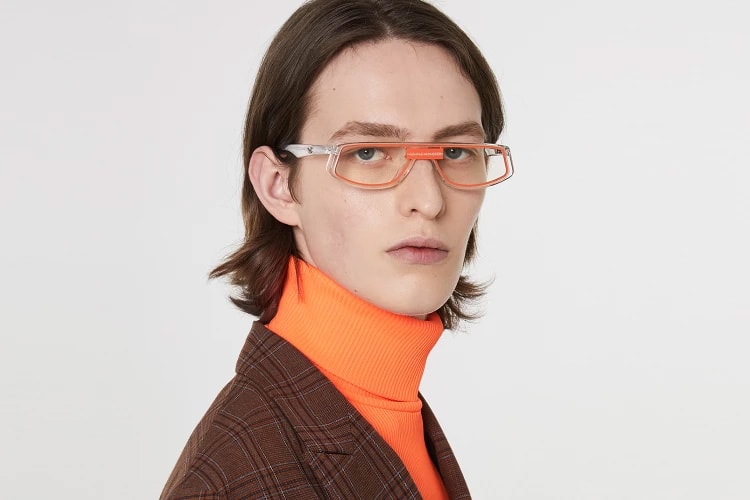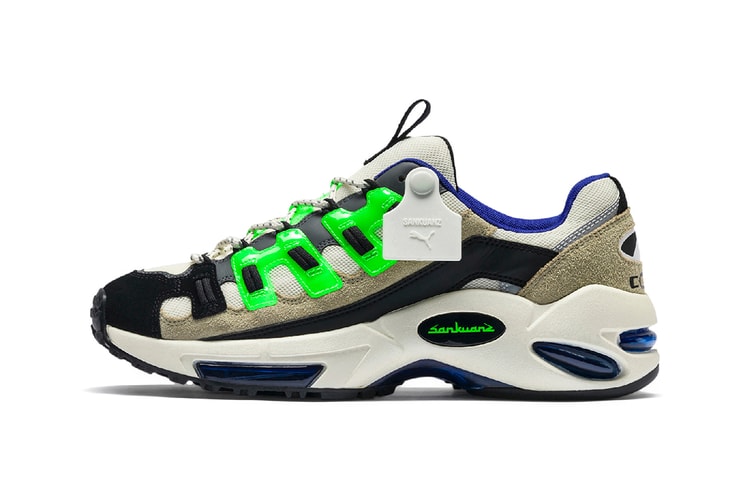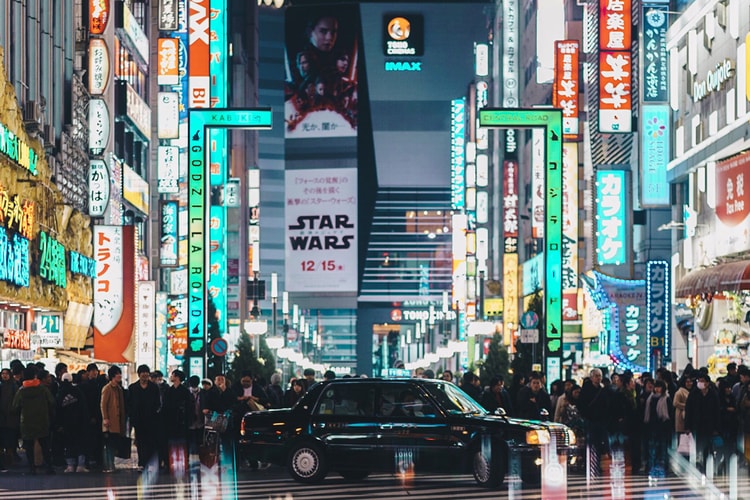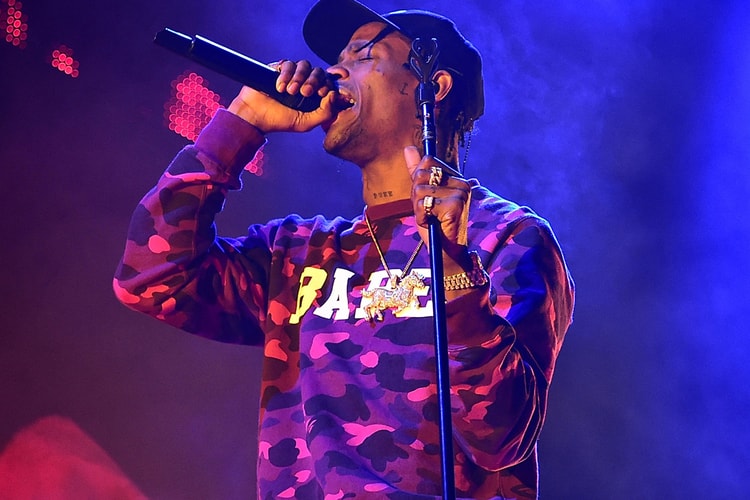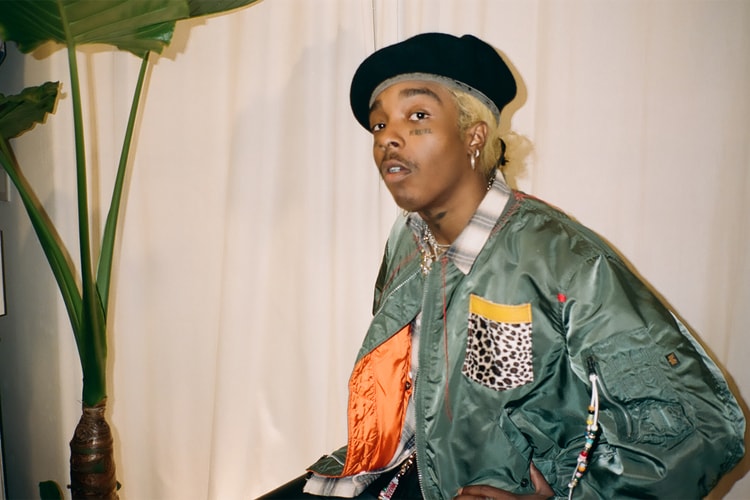Hiroshi Fujiwara and Marc Newson: A Designer to Designer Conversation
The two chat swords, snowboarding and more as Marc prepares for his Gagosian Exhibition.

It’s rare to harness a public opportunity for two established designers to exchange ideas — the creativity involved is often singular in nature. But when the chance to speak with heralded modernist Marc Newson appeared, we wanted someone to be able to extract his thoughts in an organic and unrestricted manner that only a fellow designer and veteran of ideation could conduct: Hiroshi Fujiwara of fragment design.
While the two have met previously, the interview — held intimately over Facetime — both felt refreshing as if they had never met but also at a level of comfort between two longtime friends. Marc’s discussion with Hiroshi is in the eve of his latest exhibition, to be held at the Gagosian in New York City. The display will highlight the works and world of Marc Newson, with insight and examples of his furniture work, along with lifestyle products and more exclusive productions that are rarely made available for public viewing.
The two seamlessly chat about all things design, their past works, and even a primer for a possible future partnership.

Marc Newson
Art and Design
Hiroshi Fujiwara: I just have to congratulate you for your exhibition, Marc.
Marc Newson: Oh, thank you so much. Thank you, thank you.
HF: When will it be?
MN: The exhibition will be opening 17th of January. In the Gagosian in New York. It’s a long time working on that exhibition.
HF: Right. So do you think this exhibition is you as an artist or as a designer?
MN: Yeah, it’s a good question. You know, for me personally I’m never really thinking about the difference. But for sure most of the time, almost all of the time I’m working as kind of designer. But in this situation really it’s working much more like an artist. Because I don’t have any kind of restriction or any client so to speak.
HF: Yeah. All right. Yeah, I thought now these days designers and artists are kind of, you know, similar.
MN: Yes.
HF: There is a gap between designers, artists before. But now it’s kind of getting together.
MN: Yeah, I think slowly we can see art… actually everything seems to be moving closer together in fashion, architecture… and design and art. But you know art and design were always kind of connected in my mind in a way. And actually when I was studying when I was young I was going to art school; I never went to design school, actually. But I think the two areas are sometimes coming together. And sometimes moving apart. It’s kind of back and forwards.
HF: Mm-hmm. Yeah, I think maybe 80’s designers like you, yourself, made these kinds of things happen. Like, maybe closer to art, working the way as an artist does. Not only the graphic designers would be wanting to do so many things.
MN: Yeah, yeah. Sure.
HF: Did you start [with] maybe graphic design or like furniture design?
MN: Actually, actually art. I started as, let’s say, making jewelry. Jewelry designer.
HF: Really?
MN: Actually making jewelry. I’ve studied how to make jewelry as a silversmith. So, really completely different. So making things by hand. You know that’s why I really enjoy coming to Japan and visit crafts people, craftsman. And doing that kind of things. It’s really my passion, actually. Because that’s where I started from a more kind of craftsman attitude, than let’s say a designer, just designing on paper.
HF: So when you were here in Japan, that was like early or mid-80s, wasn’t it?
MN: So first when I started coming to Japan, it was kind of like ‘87, ‘88. And then in about 1989-91 I was like living in Tokyo for almost a couple of years. But that was a really great moment, that kind of “bubble” time.
HF: Yes. Right.
MN: A crazy, crazy moment. But, you know I came from Australia, right? Somehow it kind of feels a bit closer to Japan than Europe.
HF: Right. And when you went [to] Japan you were working as a designer?
MN: Yeah. Actually I was coming to Japan because of my girlfriend, who was working in Japan at that time. But I met a guy, Kurosaki-san.
HF: Yeah. Teruo Kurosaki.
MN: Yeah. And he was kind of fantastic; he is a fantastic guy. A bit crazy making and having a furniture company called Idee. Actually I think it still exists, maybe owned by Gucci now.
HF: Mm-hmm. It is, I think. And that makes your name popular in Tokyo. I mean, you know, many people kind of know Marc Newson as like a furniture designer. Or like a product designer here.
MN: But I always was drawn to Japan. Maybe more than anywhere in the world. But I had some good opportunity to work with Japanese companies. And then not, and then again. So always, it was an important place in my career. But of course I remember you from long, long time ago, as well.
HF: I was kind of going to London, in fact.
MN: Yeah, exactly. You were kind of doing the opposite, yeah.
HF: Yeah, I was importing some stuff in London. From London, from New York, like pop culture. Those kinds of things. But you found something really deep in Japan, maybe?
MN: Oh, a lot, a lot. I was always traveling in Japan really extensively. I would be going everywhere, actually: Kyushu, Hokkaido, Okinawa. Many times in Kyoto and Aomori. I’m really going everywhere. Also I love Onsen (Japanese hot springs). I’m kind of obsessed with Onsen.
HF: So Japanese culture kind of gave you good advice or good kind of imagination for your design?
MN: Yeah, yeah… Actually it’s even more profound. Because when I arrived in Japan I’m looking at everything, you know? Like as you’re a kid… It felt for me like completely normal. Everybody says in Japan, ‘Japanese people are so interested in detail and small things.’ For me, actually it was completely normal. I was thinking, ah, finally I can find an environment where people seem to think more like… Or, I seem to think more like these people. Like just imagine you’ve looked for the first time when I went in Japan 1983, actually. A really long time ago. And I went to visit Tokyu Hands, you know?
HF: Yeah.
MN: In Shibuya was like one of the greatest moments in my life at that time.
MN: And then the other piece which I’m showing it’s like a surfboard. So when I had my last exhibition, sorry, my first exhibition at the Gagosian more than maybe 10 years ago I made a surfboard. So I made a surfboard again for the same guy. He’s an American surfer. But the guy, he’s surfing the biggest waves in the world. Kind of 40, 50 meters waves. He has some kind of world record for biggest wave.
HF: So that surfboard, actually, you can ride waves?
MN: Yeah, yeah, yeah. You could. Actually in the exhibition I’m going to have maybe five or six surfboards. And in fact one of the surfboard was ridden by Garrett [McNamara] in Portugal. Because there is this place in Portugal where they’re riding this huge, huge, huge wave. I mean enormous like a skyscraper building.
HF: Right.
MN: But let’s say the main part of the show is this kind of furniture-related pieces. Which, half of them is made in China in Beijing. And the other half it’s made in Czech Republic. The pieces I made in China it’s really, really interesting because it’s a kind of ancient Chinese technique for manufacturing pieces. It’s with enamel, kind of enamel pieces. You know like a Fabergé eggs, the small egg, which has enamel [detailing]?
HF: Like the Russian kind of type things?
MN: Yeah, yeah. But Chinese were making the same thing but on a much bigger scale. So I found this factory in Beijing. Because actually it came from Beijing hundreds of years ago. The factory still exists, actually. So we kind of rejuvenated the factory. The factory was kind of almost dead. So we built a new oven because the pieces go into ovens to make
HF: Oh, so the factory is only for your part.
MN: Well, they’re making some smaller pieces. But we built a huge, big new like facility for them. So we can make my big pieces. They’re really, really crazy. Like hundreds and hundreds of hours to make one of those pieces. But they’re very decorative, this thing. If you look it’s kind of modern, but actually it’s a really, really highly decorative.
HF: Okay.
MN: So the other group of work is made from glass. Actually big, big pieces made from glass, solid glass. Again, I found one factory in the Czech Republic who can only make big, big, big glass pieces. There’s like one factory in the world who can make such big pieces.
HF: Right. That’s like almost like a furniture show. You’re showing all the furniture in samples.
MN: It’s kind of like furniture, yeah. But it’s kind of half sculpture, half furniture. It’s this very strange combination, let’s say, of two worlds. It’s kind of design meets art, actually. Like you were saying before.
HF: Yeah.
MN: It’s exactly where these two worlds meet. It’s kind of functional but not really functional. And highly decorative. It’s really like sculpture, actually.
MN: And actually I did this kind of crazy collaboration with a Japanese national living treasure, craftsman, making a sword.
HF: Yeah; I think I saw it. I saw it in the Aman Hotel? No, is that the one?
MN: Yeah; that’s right. Once in the Aman Hotel. And then that was kind of a prototype. Then we perfected, and perfected and made it better. So that’s kind of a crazy project. And actually maybe, more kind of a crazy situation.
So that was a really, really, really interesting project. I started that project four or five years ago. I was invited to Japan by somebody who was connected to that… The name of the sword maker is Hokke Saburo. He’s an 11th generation sword maker, right? So, really incredible, incredible guy. Very old now, actually.
So as I said he’s a living treasure. But, after the tsunami in Japan a lot of those guys — craftspeople in that region — a lot of workshops were destroyed, was really badly affected by the tsunami. Including his factory. So the Japanese government provided kind of an incentive for some craftspeople. If they can find somebody else to collaborate outside of their industry, outside of their world, the Japanese government can help to support them. There was kind of a government scheme.
So we met each other and I could help him. Actually even before the tsunami it’s really, really difficult for these guys to make a living. Even now. I think, he told me, the biggest consumer of the sword is from monasteries. You know?
HF: Yeah, right.
MN: It’s kind of a semi religious object, actually. But certainly not many private clients [are] buying that sword, or wants to pay that kind of money. It’s really quite expensive.
HF: Yeah. Because they take a few years to make one sword, right?
MN: Yeah, yeah, yeah. It’s crazy. We made six swords. So it took almost, I don’t know, five years to make.
HF: Yeah. The craftsman has to work on just six swords only for two years?
MN: Ah, yeah, yeah. More! Like three or four years. And you know it’s not only a sword because, actually my collaboration is not for a sword because actually a sword is HIS work. I cannot touch that part of his work.
HF: Right, right.
MN: But you know on a kind of an ornamental kind of sword, katana or Aikuchi. There are so many pieces. So many, many small pieces. Maybe 20 small things, you know? It uses enamel, other kinds of metal work, other parts of the sword. And every one part it’s using one guy who is a kind of living treasure. So all of these people kind of working together. So I could work with everybody, actually. And it was really a crazy, crazy project.
Anyway, so the result is in the end will be for sale in the Gagosian Gallery because it’s really interesting to present an opportunity for selling this kind of work to a new or kind of different audience in kind of artwork. I want to help to support him, actually.
HF: Yeah. Yeah, maybe not only the Japanese sword but all the Japanese craftsmanship is good to pick up from overseas. Because we don’t really know how good is Japanese craftsmanship. Sometimes I don’t understand. Maybe you guys can pick up [on it] more than me. Like we know more about Air Force jackets or like American denim, more than like American people, I think.
MN: Ah, yeah, absolutely. Yeah, you are completely right. You know it’s very strange, this phenomenon. Everywhere in the world this kind of craft is dying. When we went to Beijing I knew Beijing was famous for cloisonne enamel, which is a kind of process. But it’s impossible to find a factory to do that. 200 years or 300, 400 years ago was the most accordant place in the world. So of course you can still find some people but it’s kind of dying sort of slowly. So for me my interest is just to identify this kind of crazy skill, which maybe in one generation or two it’ll be gone forever.
HF: Maybe sometimes, like the government is trying to keep it. They are visual only, you know? ‘Please don’t touch. This is a kind of a ‘my country’ thing.’ But I don’t think that’s really good because of good designs. So I hope anyone can touch or anyone can see anyone to help to grow. To pickup. Like [what you did] with the Aikuchi things.
MN: Yeah, you know in Japan we had help, actually. Really nice help from the Japanese government. The same kind of local government. They were very supportive. But the problem is they don’t know how to make a kind of connection. They’re not experts in kind of marketing or communication. You kind of have to do it by yourself, somehow. And of course those craftspeople they have no way by themselves to communicate with other people. Even inside Japan, actually. You know?
HF: Mm-hmm.
MN: Actually, probably you know one company in Japan it’s called, Wow, W-O-W. It’s kind of a multimedia company. Kind of production company, actually.
HF: Yeah.
MN: Making animation and production, film production, this kind of stuff. The guy who’s running that company, who’s a kind of boss of that company, it’s his father who’s a sword maker, right?
HF: Oh, okay.
MN: It’s really an unusual situation. But otherwise [there's] no way to connect with a new audience.
HF: Right. But, I want to say is like you, yourself, or more like artists, what you’re doing is great.
MN: Yeah. It’s my kind of hobby. My dream to work with these people. But it’s also really difficult because, well you know so well, right because you are doing collaborations, as well. It’s kind of a, takes so much energy. I know that you’re doing some great contemporary collaboration with LV and congratulations, by the way.
HF: Oh, thank you, too. You, too. You guys. You do so many things.
Marc Newson
HF: Of course, I never thought about it, but if [we] could do something, it would be great.
MN: Great! Hiroshi, let’s try, actually because you know so many companies we worked [with are] the same, right?
HF: Yeah.
MN: I love your collaboration with Moncler.
HF: Oh, thank you so much.
MN: Yeah; it’s really nice. It’s funny, actually. I just finished meeting in London with Louis Vuitton.
HF: Okay. So you’re doing more things?
MN: Yeah, we launch next year. Supposed to be this year, but of course a delay. A new range of soft luggage. So it’s kind of mixed luggage, actually. Quite cool; quite pop, actually. Bright color and soft… You know, it’s totally a different vibe from the last one.
Yeah, so I know that you’ll be getting some pieces. I’m sure.
HF: Yeah; okay. I’m looking forward. I’ve been working for the other company in the LVMH way, [but] I cannot say. Will be released mid to next year. But I have many bags and things for that corporation. All kinds of things… Yeah, let’s do something together, yeah.
HF: … Both of us doesn’t really have our own brand.
MN: Yeah, that’s right.
HF: Or we work for other companies. So if we can find good companies to work [with the] two of us…
MN: I think we’re both guns for hire, you know? I would love to work together anyway.
HF: Let’s make it happen next year, hopefully.
MN: Really nice. Something for cold weather.
HF: Yeah. I love snowboarding myself. I go to the mountains almost every week.
MN: Really?
HF: Yeah.
MN: We have to go! I’m a crazy snowboarder, [or I] used to be.
HF: Oh, please come to Japan. Japan has the most snow in the world.
MN: I know! I’m going, I’ve been two or three times in the north. I love it in Japan. That’s my favorite place for snowboarding.
HF: I have a special spot. Please come! … That’s great news. I didn’t know you did snowboarding.
MN: Yeah, yeah. Actually, I was crazy. Every year going to Canada. Yeah, I was crazy. But now since I had children…
HF: Mm-hmm. Please join in February! Let’s talk on the mountain.
MN: Yeah. In the onsen! Yeah, yeah, perfect!
Marc Newson Exhibition“I’m never really thinking about the difference [between an artist and designer].”
Surfing, Swords, and the Art of Crafting
I always was drawn to Japan. Maybe more than anywhere in the world.

LV, Snowboarding, and the Future
Gagosian New York
522 West 21st St.
New York, NY 10011
January 17 – February 20, 2019











